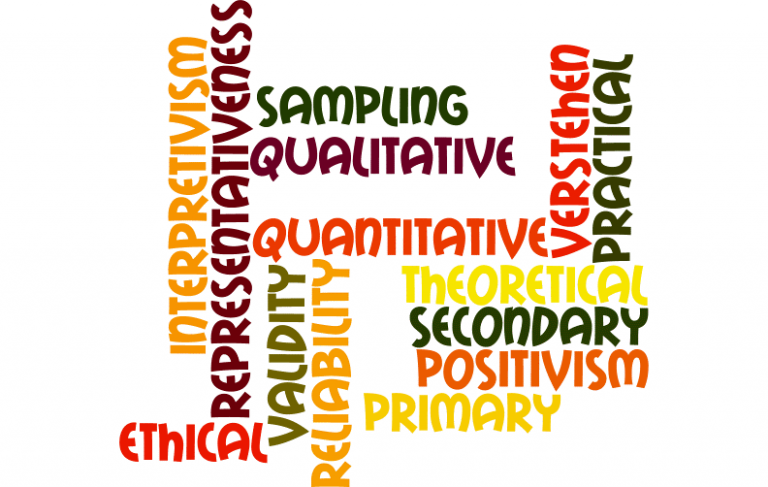How to Write a Problem Statement -with Examples
To write a good problem statement, you need to be able to identify the problem. In this article, we will show some examples of how you can go about doing that.
Define a Problem Statement
A problem statement is a clear, concise, and accurate statement that identifies the problem. It also specifies what condition(s) must exist for the issue to be resolved. The problem statement should include the following elements:
- A description-It is an expression of what is not working or deficit is the current condition).
- A statement-It points out what needs to be done (what is the desired condition).
- A list of the causes-This list has the confirmed causes of the problem.
What’s the Purpose of a Problem Statement in Research?
The importance of a problem statement in research can be summarized in the following points:
| • It provides a focus for the study. • The statement is used by the researcher in designing an appropriate methodology for solving the problem. • It clarifies the extent to which research can be undertaken. • The statement indicates how many variables are involved and the extent of knowledge required for this variable. • The statement indicates to what extent this problem is unique or whether it has been previously studied. • It measures the effectiveness of the study and helps in deciding the extent of the results which can be expected. |
Examples of Problem Statements
Example 1:
“Many colleges and universities recognize the need for organizational development in the field of education. Because of this, these institutions have begun to hire consultants to help educators analyze the practices in their schools.
Some of these consultants are ineffective, resulting in wasted time and money. Consequently, consultants need effective techniques they can use to help school administrators create effective organizational development.”
Example 2:
“Some forms of cancer are difficult to diagnose because the symptoms are nonspecific. For example, there is often a long period between initial exposure and the diagnosis of mesothelioma. The symptoms include shortness of breath, coughing, chest pain, and weight loss.
The lack of early detection results in a lower rate of cure and increased mortality. Therefore, there is a need for a blood test that detects mesothelioma at an earlier stage of development.”
Example 3:
“In most developing nations, craftspeople and small entrepreneurs often work out of their homes. After production, they sell their goods to local markets and retail stores.
Many businesses find that having inventory outside of their facilities is difficult to manage. These businesses sought to develop relationships with craftspeople who produce goods on demand for customers. This pull production technique would solve the inventory management problem.
However, the lack of information about the availability of goods has made this kind of relationship difficult. There is a need to create a system that provides information about the availability of craftspeople.”
Example 4:
“Most young adults in developed countries have experienced some form of formal education. A good education is considered essential to success in life, so there is a lot of pressure on students to perform well and get good grades.
However, many students feel like they can’t succeed because of their lack of motivation and ability to focus. This lack of motivation and focus is often associated with attention deficit disorder.
School administrators need to create a method that can be used in the classroom to help students with ADD focus on their studies. This way, these students will be able to compete on the same level as their counterparts who don’t suffer from ADD.”
Example 5:
“As the world’s population continues to grow, there is increasing pressure to develop new water sources to meet the needs of a growing population. Water is essential for food production, which involves growing plants and watering animals.
Many countries have not been able to afford the infrastructure needed for desalination plants. In addition, the process of desalination is energy-intensive and releases unhealthy gases into the atmosphere.
Although there are many new technologies for desalinating seawater, few of them are cost-effective. There is a global need to find a less expensive way to desalinate seawater.”
Example 6:
“As technology advances, more and more people are turning to the Internet to conduct business. It is becoming increasingly important that websites are accessible to everyone.
Many blind people use a screen reader, which reads text aloud based on keyboard commands.
Web pages are becoming more complex, but the screen reader has difficulty keeping up with the commands. This limitation keeps blind people from accessing the information on the Internet or keeping in touch with web advancements.
There is a need to create tools that allow screen readers to keep pace with modern websites. This development will enable blind people to stay at par with the rest of the world and remain productive in their online businesses.”
Example 7:
“In the United States, over 7 million people work as criminal investigators. They are responsible for investigating crimes, and interviewing witnesses and suspects. These investigators also maintain a chain of evidence and testify in criminal trials.
Criminal investigators must have a thorough understanding of the law and its application. They must be able to communicate effectively with various people, including victims and witnesses and suspects and defendants. Although many online resources can be used to learn about the law and how it is applied, they do not teach communication skills.
Online courses should address the specific needs of criminal investigators. This will improve their effectiveness and efficiency.”
Example 8:
The lack of affordable, healthful food in low-income communities contributes to various chronic diseases and conditions. Those who rely on small retailers for food purchases are often forced to choose between food and other expenses.
A local grocery store in the lower-income section of town is interested in providing affordable, healthful food to customers. Currently, this store does not have the space or budget to expand its offerings. It requires a plan from community stakeholders to address the lack of affordable, healthful food in low-income communities.
Local authorities should implement the existing policies on availing basic needs to low-income earners. This implementation will make life better by reducing chronic diseases caused by poor nutrition.
The Key Elements of an Effective Problem Statement


Writing a problem statement takes more than knowing the problem at hand. You need to craft a statement that will propose the solutions and direct how to solve the problem. Below are the elements of a remarkable statement:
1. It clearly and concisely identifies the problem and why it is a problem: “The lack of resources affects the ability to produce goods on demand for customers. This is because certain raw materials are no longer available to our company.”
“The lack of resources is a problem because it affects the ability to respond to customer demands.”
2. An effective problem statement identifies who or what the problem affects: “The employees working in the department” or “The unemployed individuals.”
3. It explains why this issue is important: “The loss of these materials could affect the company’s ability to produce goods on demand for customers. This effect could, in turn, lead to a loss of customer satisfaction.”
“The lack of resources is critical because it affects the ability to respond to customer demands, which could lead to reduced customer satisfaction.”
4. The statement specifies what needs to change: “Develop a list of alternative resources that can be used in the production of goods.”
“Survey companies that use similar materials to determine if they have access to the same resources. Also, find out how much they pay for the materials.”
5. It will describe the desired outcome: “Develop a plan to put the new resources in place by Quarter 4.”
“Develop a plan to provide resources for Quarter 3.”
6. An effective problem statement will explain how the solution will contribute to the goal: “This list could be used to place the necessary orders with vendors.”
“By surveying companies that use similar materials, we can determine if they have access to the same resources and what they pay for them. This information can be used to determine if the cost of these resources is competitive.”
7. It takes the steps needed to implement the solution: “The resources can be put in place by Quarter 4.”
8. The statement has a specific timeframe for completion: “By Quarter 4, we should have a list of alternative resources.”
9. The statement is realistic and achievable: “By Quarter 3, we should have a plan to provide the necessary resources.”
10. It offers a general background of the situation:
| • Situational Statement: If this is an issue that has been ongoing for some time, briefly explain when you first identified the problem. • Critical Decision: Explain why you are choosing to address this issue now or what decision precipitated your need to find a solution. • Results and Consequences: Briefly explain the implications of not addressing this issue. |
A Step-by-step Process of Writing a Problem Statement
| • Identify the problem at hand • Identify who is affected by the problem. • Describe the ideal situation • Explain the financial implications of the problem • Give your proposal • Explain how your proposal will be helpful • Explain why your proposal is the best/most practical option • Write a summary of the problem and the solution you’re proposing. |
Identify the problem at hand
For example: “Students do not have individual laptops. This lack of access to laptops makes it difficult to complete their classwork and multimedia projects throughout their time in college.”
Identify who is affected by the problem.
For example: “The students are affected because they do not have access to a laptop throughout their time in college. This lack prevents them from being able to complete classwork and multimedia projects.”
Describe the ideal situation
This step explains what the situation would be if the problem didn’t exist.
For example: “Ideally, each student would have a laptop they can use throughout their time in college. They would use the laptop to complete required coursework and express themselves through multimedia projects.”
Explain the financial implications of the problem
For example: “The company is losing revenue due to lack of visibility into the problem and decreasing customer satisfaction levels.
“If we don’t act quickly to resolve this issue, the company will lose out on revenue, and our customer satisfaction levels will decrease.”
Give your proposal
The problem-solving proposal is the solution to resolving the issue.
For example: “The administration should give each student a laptop.”
“We recommend giving every student in the college a laptop so they can complete their coursework and produce multimedia projects.”
Explain how your proposal will be helpful
The organization or team would like to know the benefits of your proposed solution. Are they long-term or short-lived? How practical are your proposals? How will they affect different teams or departments?
For example: “This solution helps the company increase its revenue by being able to serve their customers better.”
“This solution provides the company with more visibility, which increases their revenue because they can better serve customers. It also decreases customer turnover due to improved service, which they will see reflected in their numbers.”
Explain why your proposal is the best/most practical option
For example: “Giving every student a laptop is more practical than buying virtual computers for those who don’t have access to a laptop.”
Write a summary of the problem and the solution you’re proposing
The summary should be one paragraph that includes the problem statement you created in step one and the solution you proposed in step five.
“Students do not have individual laptops since they cannot afford them. This lack of access to laptops makes it difficult to complete their classwork and multimedia projects throughout their time in college. Every college student should have a laptop so that they can complete the coursework and multimedia projects that are required. I recommend that we give every student a laptop.”
Tips for Writing a Winning Problem Statement


- Avoid jargon or complex sentence structures. Your audience should be able to read and understand your statement without the need for interpretations.
- Answer the right questions of who, where, what, why, and how. There should be a clear ‘who’ affected by the problem, where it exists, and how it came to be.
- Use specific details in your statement. Avoid using ambiguous or vague words in favor of ones that are descriptive and detailed.
- Be concise when writing your statement – know what the most important details are and leave out the rest.
- Be sure to provide one-sentence examples of your proposed solution and some of the benefits that it would provide to the company.
- Use solid and impactful language. Be direct in your problem statement, but avoid being too aggressive or abrasive.
- Proofread your statement before handing it in for approval. Ensure that the statement makes sense, is clear and concise, uses the right language. Eliminate all spelling/grammatical errors.
- Remember that a problem statement tells a story about a problem you have identified and your proposed solution to that problem. Present the issue you have identified in simple, direct language to be digested easily and quickly by others.
Summary
In this article, I have written about the main elements of a problem statement. To write an effective problem statement, you need to understand a researchable problem and how to identify one.
You also need to know about the components of a good problem statement. Learn how to write a problem statement that effectively convinces your audience that you have identified a researchable problem.


I‘m a freelance content and SEO writer with a passion for finding the perfect combination of words to capture attention and express a message. I create catchy, SEO-friendly content for websites, blogs, articles, and social media. My experience spans many industries, including health and wellness, technology, education, business, and lifestyle. My clients appreciate my ability to craft compelling stories that engage their target audience, but also help to improve their website’s search engine rankings. I’m also an avid learner and stay up to date on the latest SEO trends. I enjoy exploring new places and reading up on the latest marketing and SEO strategies in my free time.






